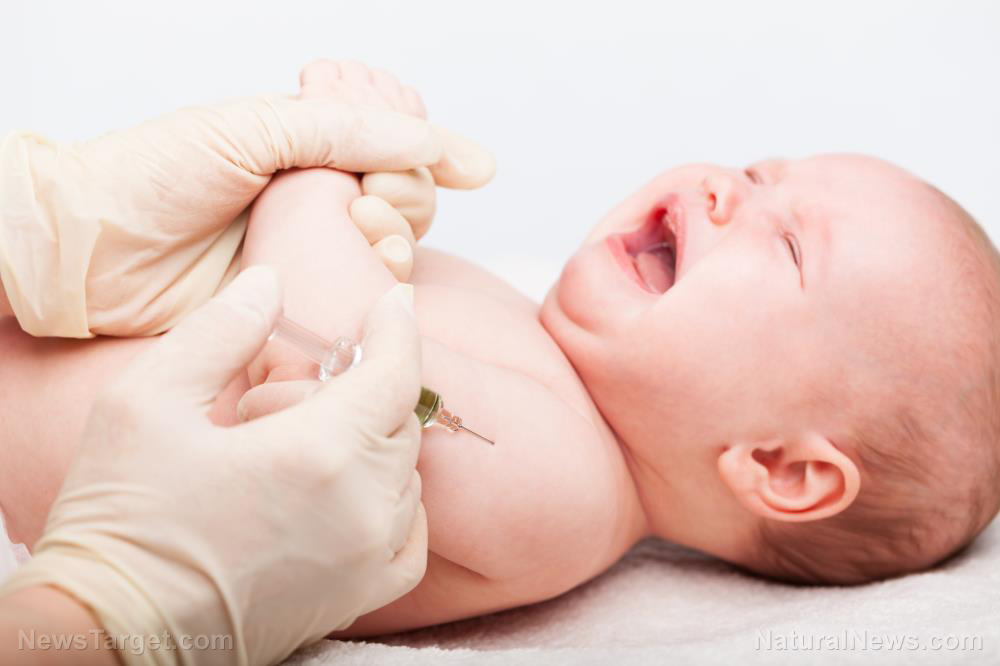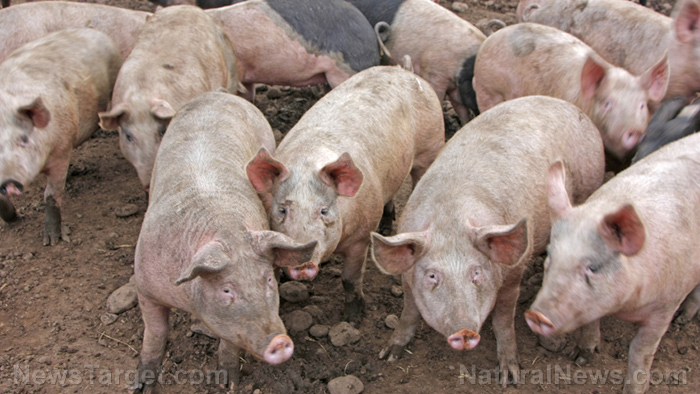VACCINES COST LIVES: Child mortality is HIGHER in developed nations that require more vaccines – new study
08/07/2023 / By Lance D Johnson

If vaccines save millions of lives and increase the human lifespan, then the nations with superior healthcare systems and the most rigorous vaccine schedules should have the lowest mortality rates for every age group, especially for children and babies. However, a new peer-reviewed study published in the Cureus Journal of Medical Science finds that child mortality is HIGHER in developed nations that require more neonatal vaccine doses. What is causing the most vaccinated populations to suffer the most, their children dying way faster and in greater numbers?
Childhood vaccine schedule is not saving more children’s lives; it’s costing more lives
In the U.S., the Centers for Disease Control (CDC) and the American Academy of Pediatrics recommend 26 doses of vaccine before a child reaches their first birthday. The Hepatitis B vaccine is practically forced onto babies on their first day of life without even a risk/benefit analysis for each individual case. The covid-19 mRNA jab is also now recommended at this fragile age. As a whole, this rigorous childhood vaccine schedule has not been studied for safety, cumulative toxicity, or for potentially damaging the innate immune function of an underdeveloped infant. These vaccines are routinely administered during several so-called “well-baby checkups” and have become the driving revenue force keeping pediatrician offices open and in business.
“Health authorities emphasize that vaccines save lives,” lead author Neil Miller told The Defender. “Yet our data suggests that when developed nations require two versus zero neonatal vaccine doses, or many versus fewer vaccines during infancy, there may be unintended consequences that increase all-cause mortality.”

This isn’t the first time that Neil Miller saw this troubling trend in the mortality data. In 2011, he and Gary S. Goldman, Ph.D. found that infant mortality rates regressed against number of vaccine doses routinely given. Despite having one of the most robust vaccine schedules for infants under one year of age, the United States ranked lower in infant mortality rate than 33 other nations that administer fewer vaccines to infants. Infants have a much lower blood volume and weight, are just beginning to develop an immune system, and are therefore more susceptible to the adjuvants, antibiotics, and other toxins in the vaccines.
Increase in childhood vaccines right after birth increases infant mortality rates
In Miller and Goldman’s latest study, which includes expanded data analyses on specific vaccines, those same results were replicated. One part of the study measured the effect of the hepatitis B and tuberculosis vaccines on mortality rates for babies up to 28 days post-birth. The study also calculated the effect these shots have on children up to one year of age and for children under five. The mortality data and the vaccine schedules were obtained from official sources – national government, UNICEF, and the World Health Organization.
The study categorized nations by the number of neonatal vaccine doses administered (one, two, or zero) and then looked into the mortality rates for all three age groups. After analyzing the data, Miller found a strong association between the vaccinations and higher infant mortality rates for all three age groups across both years studied – 2019 and 2021.
“In these circumstances health authorities expect to see negative correlations, that is, a decline in mortality with more vaccine doses. So, any statistically significant positive correlation is a genuine concern,” Miller said.
Nations that required two vaccines right after birth saw a significant increase in infant mortality (+1.28 per 1,000 live births) compared to nations that did not administer vaccines right after birth.
Infant mortality rates increased by one child per 1,000 live births for each increase of six vaccine doses administered in the first year of life. “Our findings would be considered moderate correlations which are statistically significant,” Miller said.
There is no official cause-of-death classification system for infants who may be injured by vaccines. Coroners misclassify neonatal fatalities under alternative cause-of-death classifications such as “sudden infant death syndrome” (SIDS). In a previous study published in Toxicology Reports, Miller found that most case of SIDS (75%) are reported within 7 days after vaccination.
What might be happening before the vaccine or in between the shots that increases the infant’s chance of dying? Do the vaccines cause cumulative toxicity and sudden and unpredictable changes to a baby’s immune system that make them more susceptible to suffocation, severe disease, respiratory or cardiac failure? Miller’s studies should ring an alarm bell for scientists (and parents) everywhere and pave the way for more investigative research into the mechanism of vaccines and why the mortality rate increases in the vaccinated child populations.
Sources include:
Submit a correction >>
Tagged Under:
adjuvant, Big Pharma, cause of death, CDC, childhood vaccinations, compounding toxicity, Hepatitis, immune system, infant mortality rates, medical violence, pediatricians, pharmaceutical fraud, respiratory failure, SIDS, tuberculosis, Vaccine deaths, vaccine wars, vaccines, well baby checkups
This article may contain statements that reflect the opinion of the author




















